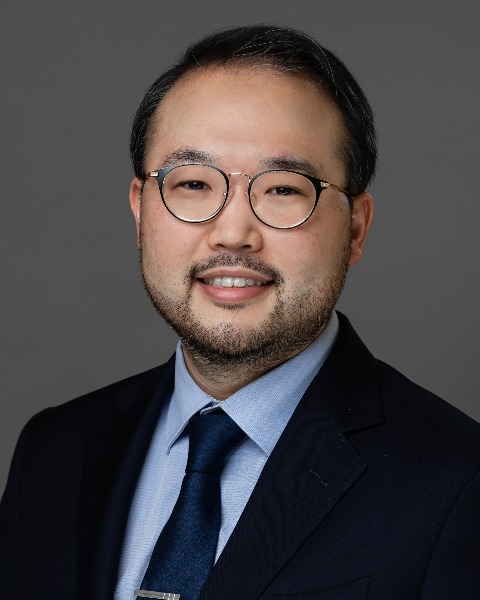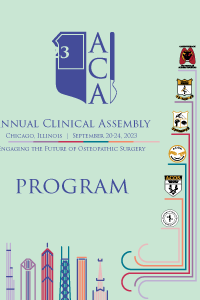ACOS 2023 Annual Clinical Assembly
General Surgery
Stroboscopic Goggles Lead to Improved Accuracy and Precision of Sutures

Sean Y. Kim, OMS4
Medical Student
Pacific Northwest University College of Osteopathic Medicine
Pacific Northwest University College of Osteopathic MedicineDisclosure(s): No financial relationships to disclose
Member Speaker(s)
Learning Objectives:
- Upon completion, participants will understand the concept and utility of stroboscopic goggles in motor training.
- Upon completion, participants will appreciate the benefit of stroboscopic goggles in medical student suture training.
- Upon completion, participants will theorize different applications of stroboscopic goggles to enhance suture training and other motor tasks among medical students.
Basic suturing skills allow medical students to participate in wound closure opportunities. Studies have shown that structured or repeated suture training enhances trainee suture quality. Further studies have demonstrated that stroboscopic goggles, which intermittently occlude vision to alter task difficulty, subjectively improve suture quality. No prior studies have objectively measured the impact of stroboscopic goggle use on suture accuracy and precision. This study aimed to quantitatively measure the impact of stroboscopic goggle use on the accuracy and precision of student suturing, as well as the relative value of early utilization of stroboscopic goggles in suture training compared to later utilization.
Methods or Case Description: This crossover study recruited and randomized 72 graduate students with fewer than 50 hours of suturing experience to train with stroboscopic goggles during either the first training block (Group A) or the second training block (Group B) of structured suture practice. All participants completed two training blocks, each composed of a baseline assessment, two training sessions, and a post-training assessment. Participants then completed a final fifth assessment one week after the second training block. All assessments were completed without stroboscopic goggles and required ten running sutures with 3 mm horizontal spacing from the midline to the suture entry and exit and 3 mm vertical spacing between each suture. Stroboscopic goggles were used exclusively during training sessions. Suture photos were analyzed using ImageJ to measure suture width (entry and exit points around a midline, 20 measurements) and vertical spacing (18 measurements). The mean suture total error among all measurements represented accuracy. The standard deviation of error represented precision. Intra- and inter-group trends were identified using Wilcoxon rank-sum tests.
Outcomes: All participants showed statistically significant improvements in suture accuracy and precision. Both groups improved in accuracy in the sessions immediately following stroboscopic goggle use but not in other training intervals. Participants with early utilization of goggles demonstrated significantly improved accuracy before the crossover (mean error 44.65 to 30.92, p = 0.0028), while participants with later utilization of goggles demonstrated significantly improved accuracy after the crossover (28.60 to 22.52, p = 0.0313). Both groups demonstrated improved precision from assessment 1 to assessment 3 (p = 2.55x10-8, 0.0006), but only the participants with later utilization of goggles showed significant improvement from assessment 3 to assessment 5 (p = 0.8014, 0.0007).
Conclusion: Structured suture practice yielded improved accuracy and precision over five total assessments for all participants. All participants significantly improved in accuracy in the sessions immediately following stroboscopic goggle use. However, participants who utilized goggles later in training continued improving in accuracy and precision, while participants who utilized goggles early in training plateaued in their improvement. Using stroboscopic goggles showed quantifiable benefits for augmenting suture training with the greatest effect after initial skill acquisition was already completed. Further research could focus on elucidating the optimal timing and dose of stroboscopic goggles for use in suture training.

